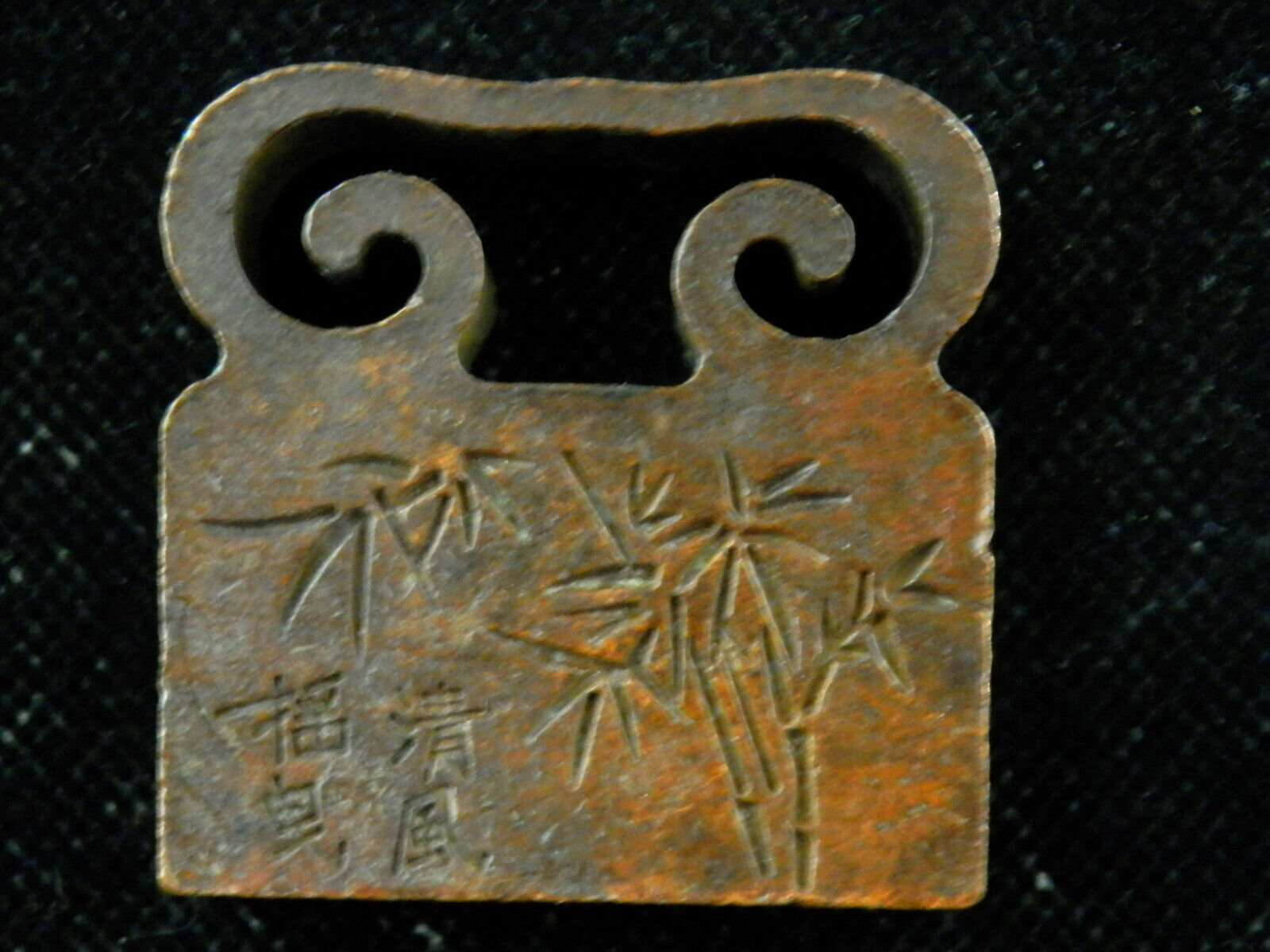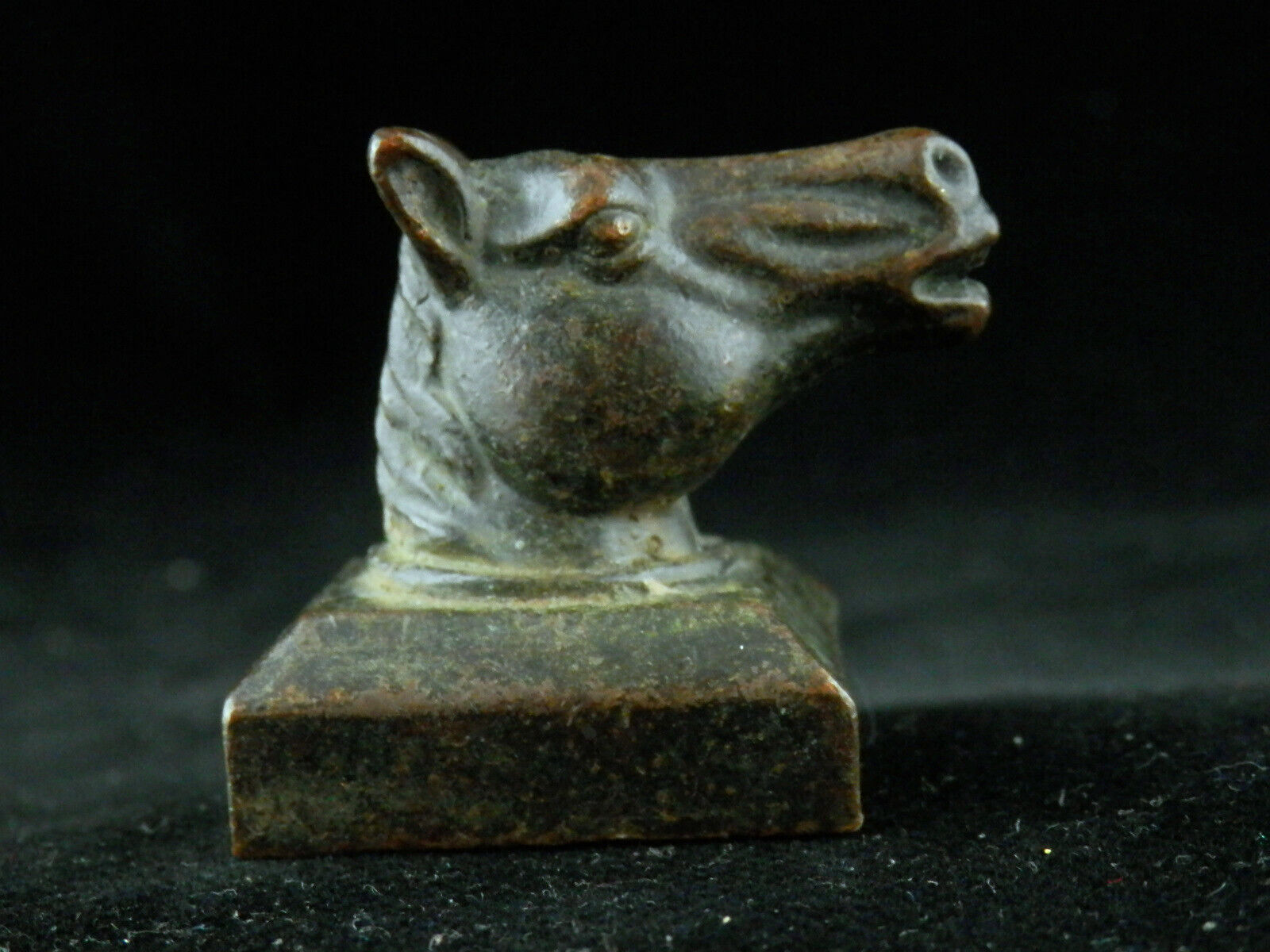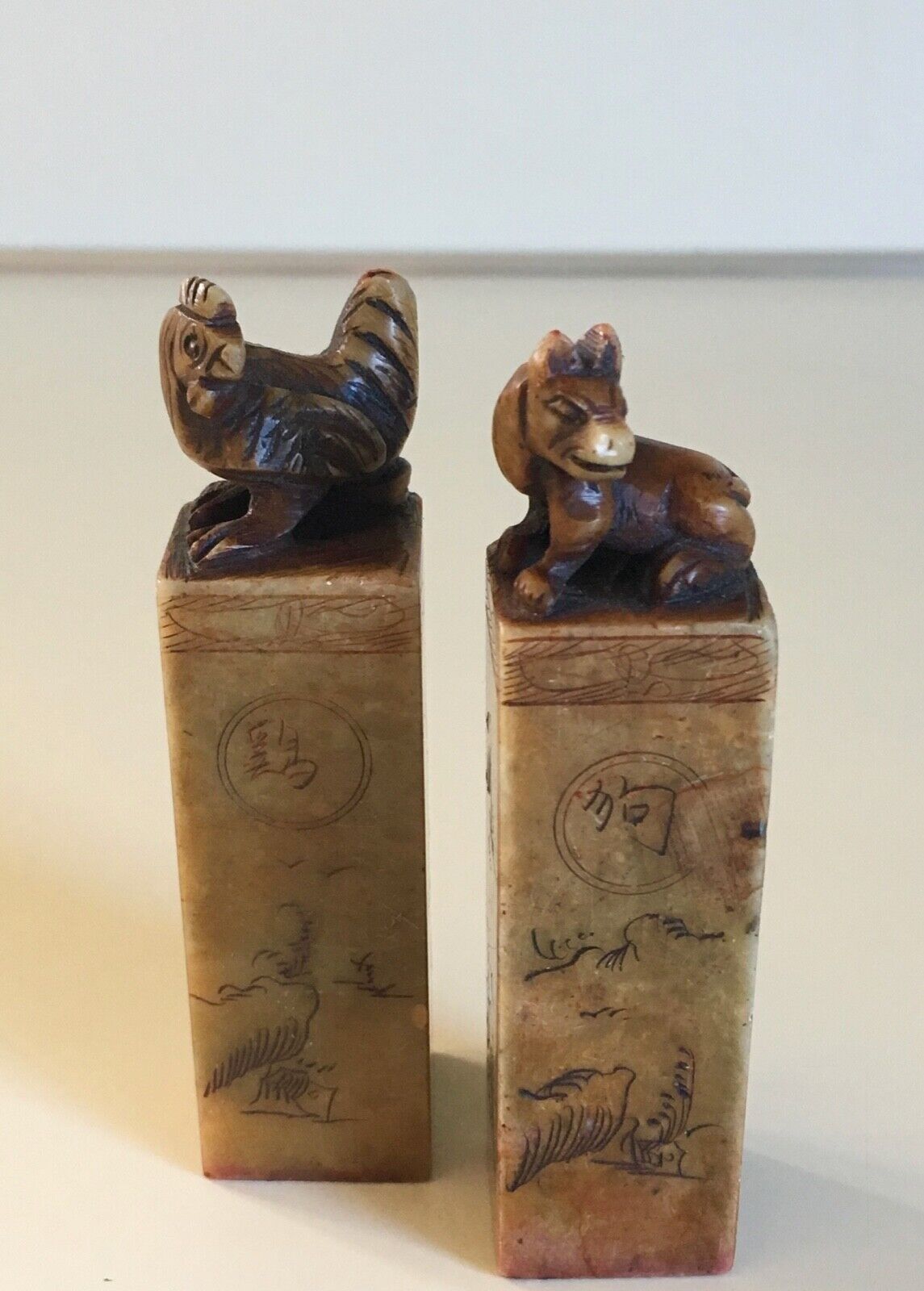-40%
Chinese Qing Dyn. Prince's Marble "Chop" Qilin Stamp for a Judge w/Translation!
$ 468.86
- Description
- Size Guide
Description
Ancient CivilizationsAntiques, Artifacts & Fine Collectables
Chinese Qing Dynasty Judge’s Marble
Qilin
Chop
Hand-Carved Name Seal/Stamp with Translation
c.
Early Qing Dynasty 1700s
“The King’s High Advisor from the Capital, who is a Prince,
Provides a Sudden & Quick Judicial Decision
Based Upon the Statements of Many Men Present”
~Translation of this chop provided in 2019 by author, WDH
This judicial Chinese “Chop” or “name seal or stamp” dates to the early Qing Dynasty of the 1700s.
Instead of signing his name, it would have been used by a judge, who was a Prince in this case, to stamp an official document with his legal decision.
DETAILS
Item:
Chinese Qing Dynasty Judge’s Qilin Chop
Est. Date: Early Qing Dynasty 1700s
Material:
Polished Pink Marble
Measurements
·
1.21" (31 mm) square on the bottom x 3.45" tall (87 mm).
·
Weight:
6.7 oz. (190 mm).
Condition:
This chop/stamp is in very good condition with a lovely warm patina appropriate for its age.
It is made of pink marble and the top has a lovely, tan patina from the hand oils from the Prince who obviously used this chop for many years.
There are no cracks, repairs, or restorations, and is ready to display in your collection.
It retains the red ink on the base that remains next to the raised, Seal Scrip characters on the base.
The crouching beast with sharp claws on the top of the chop is a mythical Chinese dragon called a
Qilin
.
It was considered a friend of mankind and a guardian of the spirit world.
Based upon the inscription found on this chop, it was almost certainly owned by Prince (
Hou
), who acted as a judge on behalf of the King who had appointed him!
According to Taoist mythology, although Qilin can look fearsome, qilin only punish the wicked; therefore, in ancient lore and stories, there are several variations of court trials and judgements based on qilin divinely knowing whether a defendant was good or evil— innocent or guilty. Qilin appear only in areas ruled by a wise and benevolent leader/king, as is stated on the inscription found on this chop.
{see details below}
English Translation of Chinese Characters
I have translated into modern English the seal script characters on this Judge’s Qilin Chop.
Any errors in this literal translation are, of course, my own.
“The King’s High Advisor from the Capital, who is a Prince,
Provides a Sudden & Quick Judicial Decision
Based Upon the Statements of Many Men Present”
It is interesting to note that this chop does
not
contain the Seal Script character for “Judge.”
It just refers to the King’s (
Wáng)
“
High Advisor from the Capital
” as a “
Prince
” (
Hou)
who makes Judicial Decisions. So, it appears that the Prince, who was
more enlightened than those of the provinces,
was the King’s special advisor and that the Prince did not hold the permanent position of a judge—at least that is what is inferred by the characters on this chop.
Seal script (often called "small seal" script) is the formal script of the Qín system of writing, which evolved during the Eastern Zhōu dynasty in the state of Qín millennia ago and was imposed as the standard in areas the great Qín Dynasty gradually conquered. Although some modern calligraphers practice the most ancient oracle bone script as well as various other scripts older than seal script found on Zhōu dynasty bronze inscriptions, seal script is the oldest style that continues to be widely practiced.
Today, this style of Chinese writing is used predominantly in seals, hence the English name. Although seals (name chops), which make a signature-like impression, are carved in wood, jade and other materials, the script itself was originally written with brush and ink on bamboo books and other media, just like all other ancient scripts.
Most people today cannot read the seal script, so it is considered an ‘ancient’ script, generally not used outside the fields of calligraphy and carved seals. However, because seals act like legal signatures in the cultures of China, Japan, Korea, and Vietnam, and because vermillion seal impressions are a fundamental part of the presentation of works of art such as calligraphy and painting, seals and therefore seal script remain ubiquitous.
QILIN
The Qilin (Chinese:
麒麟
), or Kirin in Japanese, is a mythical, chimerical creature known for millenia in Chinese and other East Asian cultures.
It is said to appear with the imminent arrival or passing of a sage or illustrious ruler.
A Qilin is a specific type of the lin mythological family of one-horned beasts and the qilin may be described or depicted in a variety of ways.
The Qilin on this ornate chop has the body of a lion and the head of a dragon. The Qilin is sometimes incorrectly referred to as a "Foo-Dog" in the West; it is a term that is
never
used in China as it has negative connotations
Qilin
generally have Chinese, dragon-like features. Most notably their heads, eyes with thick eyelashes, manes that always flow upward and beards. The Chinese dragon has antlers, so it is most common to see qilin with antlers. Dragons in China are also most commonly depicted as golden, therefore the most common depictions of qilin are also golden, but are not limited to just gold, and can be any color of the rainbow, multicolored, and various colors of fur or hide.
This chop has was made from a wonderful, golden colored stone that mimics the color of gold.
According to Taoist mythology, although they can look fearsome, qilin only punish the wicked, thus there are several variations of court trials and judgements based on qilin divinely knowing whether a defendant was good or evil, and guilty or innocent, in ancient lore and stories.
In Buddhist-influenced depictions, they will refuse to walk upon grass for fear of harming a single blade, and thus are often depicted walking upon the clouds or the water. As they are divine and peaceful creatures, their diets do not include flesh. They take great care when they walk to never tread on a living creature, and appear only in areas ruled by a wise and benevolent leader, which can include a household. They can become fierce if a pure person is threatened by a malicious one, spouting flames from their mouths and exercising other fearsome powers that vary from story to story.
Legends tell that qilin have appeared in the garden of the legendary Yellow Emperor and in the capital of Emperor Yao. Both events bore testimony to the benevolent nature of the rulers. It has been told in legends that the birth of the great sage Confucius was foretold by the arrival of a qilin.
Qilin are thought to be a symbol of luck, good omens, protection, prosperity, success, and longevity by the Chinese. Qilin are also a symbol of fertility, and often depicted in decorations as bringing a baby to a family.
DETAILS
I have carefully examined this item under 10x magnification and it also shows authentic and original signs of historic use that help to further authenticate it as an historic piece.
I
Guarantee
this
seal
to be 100% authentic or your money back!
You will not be disappointed!
It is exceeding rare and museum quality ancient Chinese work of art.
It is a wonderful piece and would look great displayed next to your other fine ancient Chinese jade and bronze pieces!
Please examine the photos taken at 4x macro carefully as they are part of the description.
The stand and ruler are
not included in this auction.
And please ask any questions before you buy. Thanks!
Per e-Bay's rules, PayPal only please! All Sales are Final!
THANKS!
FREE SHIPPING cost includes Insurance and is accurate for all 50 United States.
Overseas buyers are responsible for all shipping costs and import taxes or duties.















